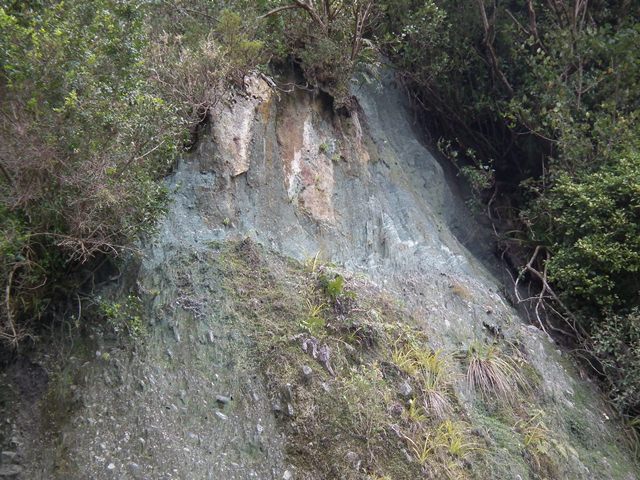NASA Spacecraft Images New Zealand Quake Region
 Perspective view of Christchurch, New Zealand, acquired Feb. 23, 2011 by the Advanced Spaceborne Thermal Emission and Reflection Radiometer (ASTER) instrument on NASA's Terra spacecraft. The image shows the city of 377,000 as well as the adjacent Banks Peninsula, location of the epicenter of the Feb. 22, 2011, magnitude 6.3 earthquake. Image credit: NASA/GSFC/METI/ERSDAC/JAROS, and U.S./Japan ASTER Science Team
Perspective view of Christchurch, New Zealand, acquired Feb. 23, 2011 by the Advanced Spaceborne Thermal Emission and Reflection Radiometer (ASTER) instrument on NASA's Terra spacecraft. The image shows the city of 377,000 as well as the adjacent Banks Peninsula, location of the epicenter of the Feb. 22, 2011, magnitude 6.3 earthquake. Image credit: NASA/GSFC/METI/ERSDAC/JAROS, and U.S./Japan ASTER Science Team› Larger image
February 24, 2011
A day after a powerful magnitude 6.3 earthquake rocked Christchurch, a city of 377,000 on New Zealand's South Island, on Feb. 22, 2011, the Advanced Spaceborne Thermal Emission and Reflection Radiometer (ASTER) instrument on NASA's Terra spacecraft imaged the Christchurch region. The imaging was done at the request of the International Charter, Space and Major Disasters, which provides emergency satellite data to federal agencies in disaster-stricken regions.
Two images are presented here. The first is a perspective view showing the city of Christchurch and the Banks Peninsula at upper right, location of the quake's epicenter in Lyttelton. The Banks Peninsula is composed of two overlapping extinct volcanoes. The perspective view was created by draping the ASTER natural color image over the 3-D ASTER topographic data. The second image is a nadir view pointing straight down to the ground. The images cover an area of 19 by 26 kilometers (12 by 16 miles), and are located near 43.5 degrees south latitude, 172.6 degrees east longitude. The resolution of ASTER is not sufficient to spot damage to individual buildings.
The quake-the worst natural disaster to hit New Zealand in 80 years-struck at 12:51 p.m. local time on Feb. 22. It was centered in Lyttelton, just 10 kilometers (6.2 miles) southeast of Christchurch, at a shallow depth of just 5 kilometers (3.1 miles). It is considered to be part of the aftershock sequence of the much larger magnitude 7.0 earthquake of Sept. 4, 2010, which was centered 45 kilometers (30 miles) west of Christchurch. That quake, while larger, resulted in injuries and damage but no fatalities.
According to the U.S. Geological Survey, the Feb. 22 quake involved faulting at the eastern edge of the aftershock zone from the Sept. 2010 event. The earthquake is broadly associated with deformation occurring at the boundary of the Pacific and Australia tectonic plates.
More information about ASTER is available at http://asterweb.jpl.nasa.gov/.
Previously released NASA topographic views of New Zealand and the Christchurch region from ASTER and the Shuttle Radar Topography Mission (SRTM) can be viewed at: http://asterweb.jpl.nasa.gov/gallery/images/banksview2.jpg ; and http://photojournal.jpl.nasa.gov/catalog/PIA06662 . A flyover animation of New Zealand created from SRTM data can be viewed at:
http://www2.jpl.nasa.gov/srtm/images/movies/srtmnewzealand.mov .
For more information see http://photojournal.jpl.nasa.gov/catalog/?IDNumber=pia13882
Images

› Larger image
http://www.jpl.nasa.gov/news/news.php?release=2011-061
~~~~~~~~~~~~~~~~~~~~~~~~~~~~~~~~~~~~~~~~~~~~~~~~~~~~~~~~~~~~~~~~~~~~~~~~~~~~
22 September 2012
Landslides and the Alpine Fault in New Zealand
Posted by dr-dave
On the western side of South Island in New Zealand the Southern Alps are bounded my a major active fault, known as the Alpine Fault. In this area the Alpine Fault has been responsible for many earthquakes in the past, and it is thought to be at high risk of a rupture again. The last major rupture was in 1717; typical return periods are in the range of 140 to 350 years. The fault is a right lateral strike-slip fault, although there is some thrusting associated with it as well.
To the south of the town of Franz Josef the fault is exposed in the banks of a small river at a place called Hare Mare. Here, up on the walls of the creek, there is an outcrop of bedrock thrust over young river gravels. In the image below, the bedrock is about 5 m thick. The contact between the two is the fault:
Major faults in mountain chains trigger large numbers of landslides. In addition, the tectonic disturbance and uplift leave the landscape prone to mass movements. Throughout its length the Alpine Fault has large numbers of landslides in close proximity. At Hare Mare these are clearly evident. A view upstream on the hanging wall side (based upon the thrusting evident in the image) the landscape shows multiple landslide scars:
Although not immediately recent given the amount of revegatation, these are two young to date from the last Alpine Fault rupture. The landslides generate a vast amount of sediment – this is one of the smaller recent fans developed from landsliding in small gully systems on the flanks of the creek:
Note Chris Smart for scale. When the next Alpine fault rupture occurs there are likely to be many landslides, which in themselves will be a substantive hazard. However, they will also present a long-term legacy (as is now occurring in Sichuan) that will be very difficult to manage as the rate of sediment production and movement will increase dramatically across the mountain range. In turn this will cause the rivers to aggrade, which will cause huge disruption right along the mountain front for years or possibly decades.
http://blogs.agu.org/landslideblog/2012/09/22/landslides-and-the-alpine-fault-in-new-zealand/--
Zenguins!
Vei8-Volcanoes of the World Webcams
Roxxfoxx~~Adventures in Geology
Penguin News Today
Penguinology: The Science of Penguins
Gentoo Penguins of Gars O'Higgins Station, Antarctica
Canis lupus 101
Dances with Werewolves
Through Golden Eyes
__._,_.___



No comments:
Post a Comment